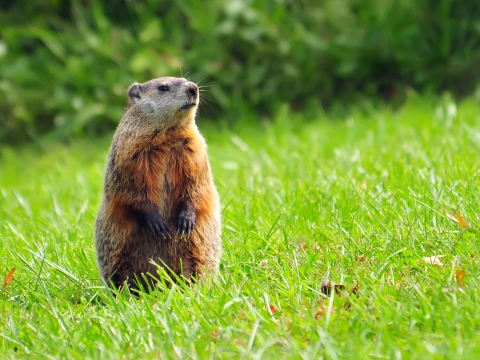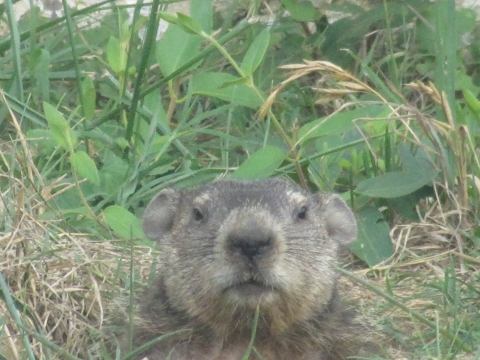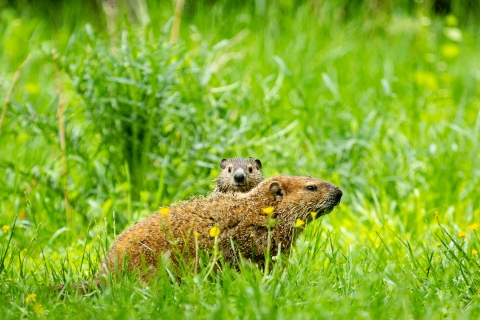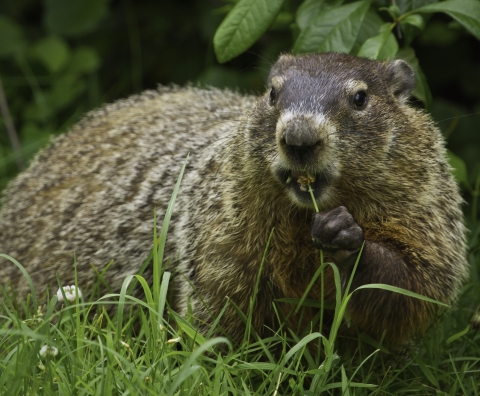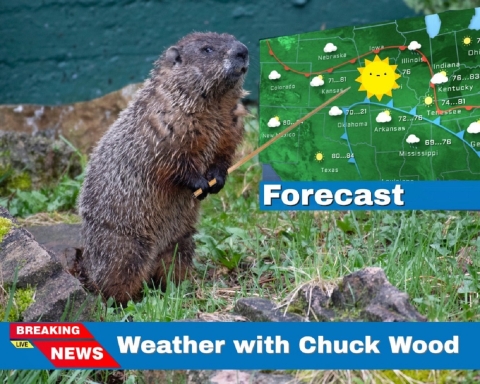Groundhogs (a.k.a. woodchucks or whistlepigs) are stout cat-sized rodents belonging to the group of large ground squirrels in the family Sciuridae. They have the nickname “whistlepig” because when alarmed, they use a high-pitched whistle to warn the colony.
Groundhogs have short ears and a short tail. The jaws are strong, and their teeth grow throughout their lives.
The average groundhog weighs as much as 11lbs. Despite their stocky build, they are surprisingly quick. Groundhogs are also good swimmers and tree climbers.
They have two layers of fur: a dense grey undercoat and a longer coat of banded guard hairs that gives the groundhog a “frosted” appearance. When groundhogs are frightened, the hairs of the tail stand straight up.
Where Groundhogs Live
Groundhogs live near rocky outcrops from valley bottoms to alpine tundra, but they avoid dense forest. They are active mostly at dawn and dusk.
Groundhogs are exceptional diggers and will use their claws to create an intricate system of underground burrows, which even include a separate “bathroom” chamber!
Their burrow systems can have between two and ten entrances, but the average is around five.
They use their burrows all year round for resting, safety and raising young.
What Groundhogs Eat
A groundhog’s diet consists of lots of green plants, fruits, and vegetables, but very little water. Most of their moisture come from dewy leaves. They’re mostly herbivores, except for when they’re not. They will occasionally be spotted snacking on insects, bird eggs and other tiny critters.
The Origins of Groundhog Day
We can all agree that the groundhog is the world’s most famous rodent meteorologist, but who appointed them the official spring forecaster? The Pennsylvania Dutch introduced this superstition into our popular culture. The lore claims that if the groundhog emerges from its burrow on February 2nd and sees its shadow, it will retreat back underground and there will be six more weeks of winter. If the groundhog doesn’t see its shadow, then spring will arrive early.
But how accurate are their annual forecasts? Sorry to be a downer, but there is no correlation between the groundhog seeing a shadow and the arrival of spring. Even if their weather predictions aren’t scientific, we can all appreciate the loaf-like groundhog.

